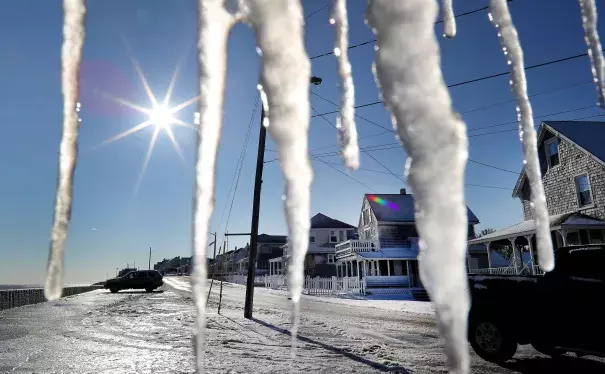Extreme Temperature Workout: The Gyrations of January 2018

A fresh blast of Arctic air was making its way toward the eastern U.S. on Tuesday, accompanied by yet another round of snow and ice deep into the South, from Austin to Atlanta. It’s already been a memorable winter for the nation’s eastern half, with the coldest or second-coldest week between Christmas and New Year’s on record at a number of spots. What’s less obvious is that the persistent bouts of frigid air have been surrounded—and in some cases interrupted—by pockets of record-breaking warmth for January.
Record mildness in midwinter doesn’t grab the headlines as aggressively as record cold, since the effects are more often tranquil than terrible. But even a balmy stretch in January can have its problematic side, especially if it follows a deep freeze. Over the past few days, colossal ice jams have gummed up rivers and triggered evacuations over parts of the northeast U.S. and southeast Canada. A local state of emergency was declared Monday for the town of Kent, Connecticut, which is at risk from an ice jam reported to be a mile long and 12 feet deep on the Housatonic River, as reported by weather.com. Damage to a dock caused by ice jams on the St. Clair River northeast of Detroit is impeding cross-border traffic between the U.S. and Canada, according to the Associated Press, and a mobile home park in Plattsburgh, NY, was evacuated over the weekend, with several homes still cut off by floodwater. A Facebook post by Gilles Poirier shows a spectacular ice jam along the Shediac River in New Brunswick, Canada, on Saturday.
Ice jams develop when a rapid warm-up triggers sudden fragmentation of the ice atop a frozen river. Huge chunks of ice can pile up downstream, especially where the ice has yet to give way.
Weather whiplash, 2018 style
Conditions last week were tailor-made for ice-jam formation. After close to three weeks of bitter cold, readings soared well above 50°F late last week. North of Maine, the Canadian province of New Brunswick set its all-time January high with a reading of 17.3°C (63.1°F) at Sussex Four Corners on Saturday. Temperatures got as high as 19°C (64°F) in Nova Scotia, breaking all-time January highs at several communities, including Halifax with 15.4°C(59.7°F).
Some of the ups and downs in the northeast U.S. have been head-spinning. In Burlington, VT, a daily record low of –20°F on Jan. 7 was followed by a record high of 61°F on Fri., Jan. 11. By Sunday morning, Jan. 13, temperatures were back down to –5°F. Just as impressive, given how cold it's been: Albany, NY, has failed to set even one record low all winter—but it did manage to score a daily record high on Friday, with 63°F.


